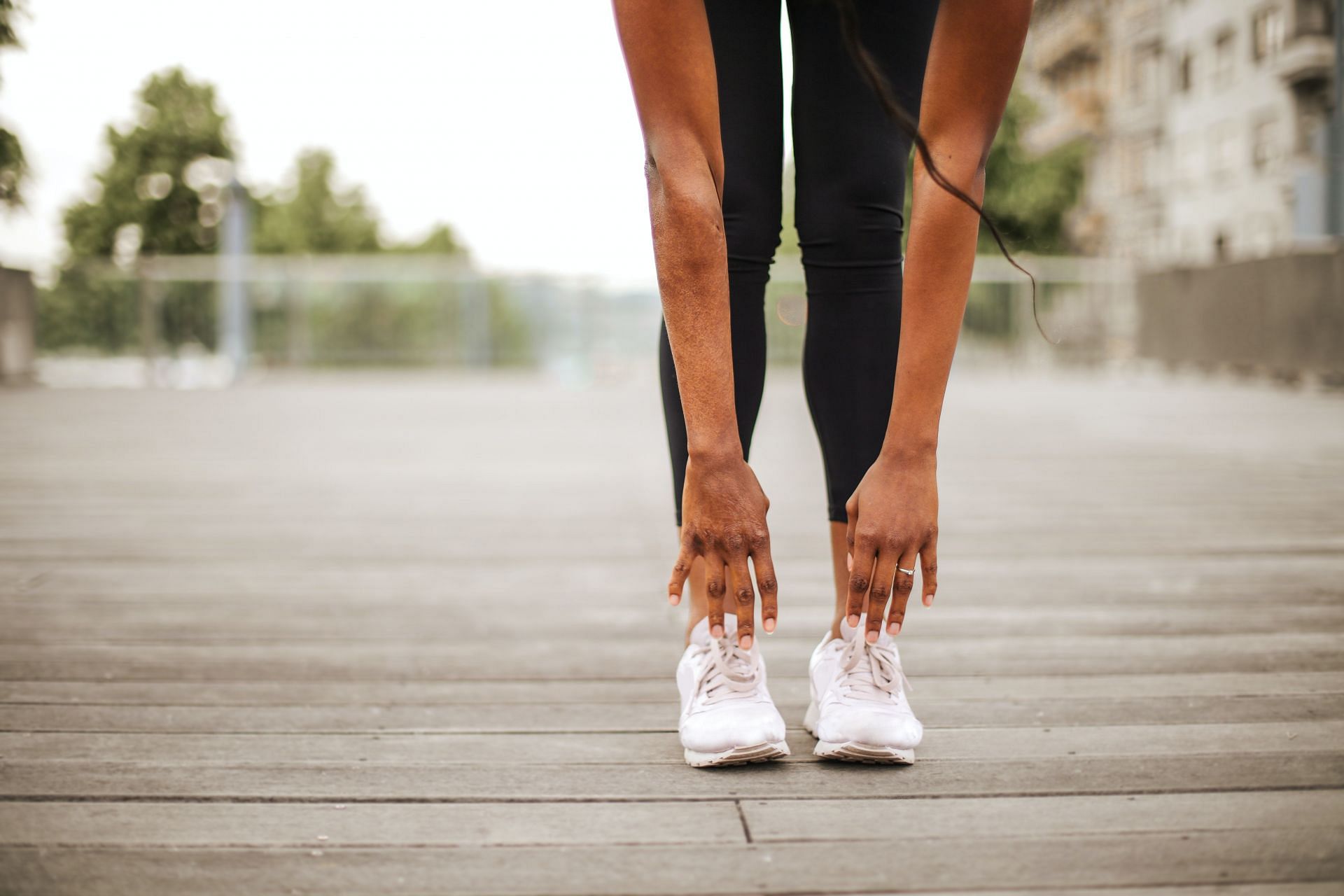Ardha Uttanasana ( pronounced ARD-uh ooh-tuhn-AHS-uh-nuh) is a half-standing forward fold that stretches and rejuvenates the spine and legs. This pose is an important part of Sun Salutations because it helps the body prepare for more advanced yoga poses. It's also known as the Half Standing Forward Fold or the Half Forward Bend.
Despite the intense name, this asana maintains a relaxed and pleasant stance. Don't overdo it by pushing too hard; your body will stretch and strengthen with time and practice. If you relax more in the pose, you'll receive a deeper stretch.
Getting started with Ardha Uttanasana: Correct technique
Ardha Uttanasana is a challenging standing Hatha yoga pose that stretches the backside of the body while also relaxing the mind.
Here is a step-by-step guide to follow:
- Begin in Uttanasana (Standing Forward Fold), with your hands or fingers on the floor at the sides of each foot. Alternatively, you can rest your hands on your shins or press your palms onto yoga blocks at the sides of your feet.
- Inhale as you straighten your elbows and raise the front of your torso away from your thighs.
- Raise your sternum and collarbones off the floor. Reach forward with your crown of your head and back with your tailbone. To assist, straighten the body and spine, slightly bending your knees.
- To help elevate and straighten your body, press your fingertips or palms against the floor.
- Lift your chin slightly and look forward without craning your neck. You should have a straight torso. If your back is rounding, raise your hands or bend your knees until your spine is straight.
- Draw your quadriceps (front thigh muscles) up toward the ceiling by engaging them. Bend your knees slightly.
- Bring your weight to your toes. Maintain hip alignment over ankles.
- With each inhalation, elevate and stretch your torso slightly.
- Maintain the posture for one minute. As you relax into Uttanasana, exhale.
- Rep 5–10 times more.
Benefits of Ardha Uttanasana: Why should you do it?
There are several advantages to including Ardha Uttanasana in your everyday yoga practice:
1) Aids in posture improvement.
Rooting your feet firmly on the floor enables you to shift more weight to the balls of your feet, balancing your body weight distribution and improving your overall posture.
2) Improved flexibility
This pose allows you to practice yoga breathing, increase your focus, and relax your mind. It's also a terrific approach to gain the strength and flexibility that advanced yoga poses and sequences require.
A deep forward fold stretches and lengthens the hip flexors, restoring balance and strength to the hips and pelvic region.
3) Straight back
The straight back, which is the primary transition posture in this sequence, will be the key position that you will return to as your yoga practice progresses.
4) Works on multiple muscles
The hamstrings, calves, and front and back torso are stretched and lengthened by Ardha Uttanasana. It also improves posture by strengthening the back and spine. This pose improves digestion by stimulating the abdominal organs and tummy.
Tips to remember to avoid mistakes
Ardha Uttanasana can be a terrific method to extend your spine and legs. When performing this stance, keep the following in mind:
- Instead of bringing your hands all the way to the floor, focus on stretching the front of your torso. To maintain this length, bend your knees as much as necessary, or lay your hands on your shins, yoga blocks, a chair, or against the wall.
- As you reach the tailbone behind you, extend the crown of your head forward. Make as much space as possible between your belly button and tailbone.
- Fold from the hips rather than the waist. Place your hands exactly on your front hip bones to learn this exercise. Keep your torso extended by pressing your hands into your front hip bones and hinge from there.
- Aim for proper ankle, knee, and hip alignment. Leaning back and putting too much weight on the heels is frequent. To learn the proper weight distribution, practice the position with your back against a wall.
- With the hands resting on the back of a chair or against a wall, those with back issues should practice this stance. Knees should be slightly bent. Keep your head down if you have a neck injury and don't lift it to look forward. Before practicing yoga, consult registered healthcare provider if you have any medical problems.
- When done correctly, Ardha Uttanasana is a soothing stretch. Always remember to take it carefully and not to overwork yourself.
To find a variation of the posture that works for you, try making the following changes:
- Bend your knees if your hamstrings or lower back are tight.
- Place your hands on your shins if you can't readily contact the mat with your knees straight. You can also press each hand against the outside of each foot with yoga blocks.

